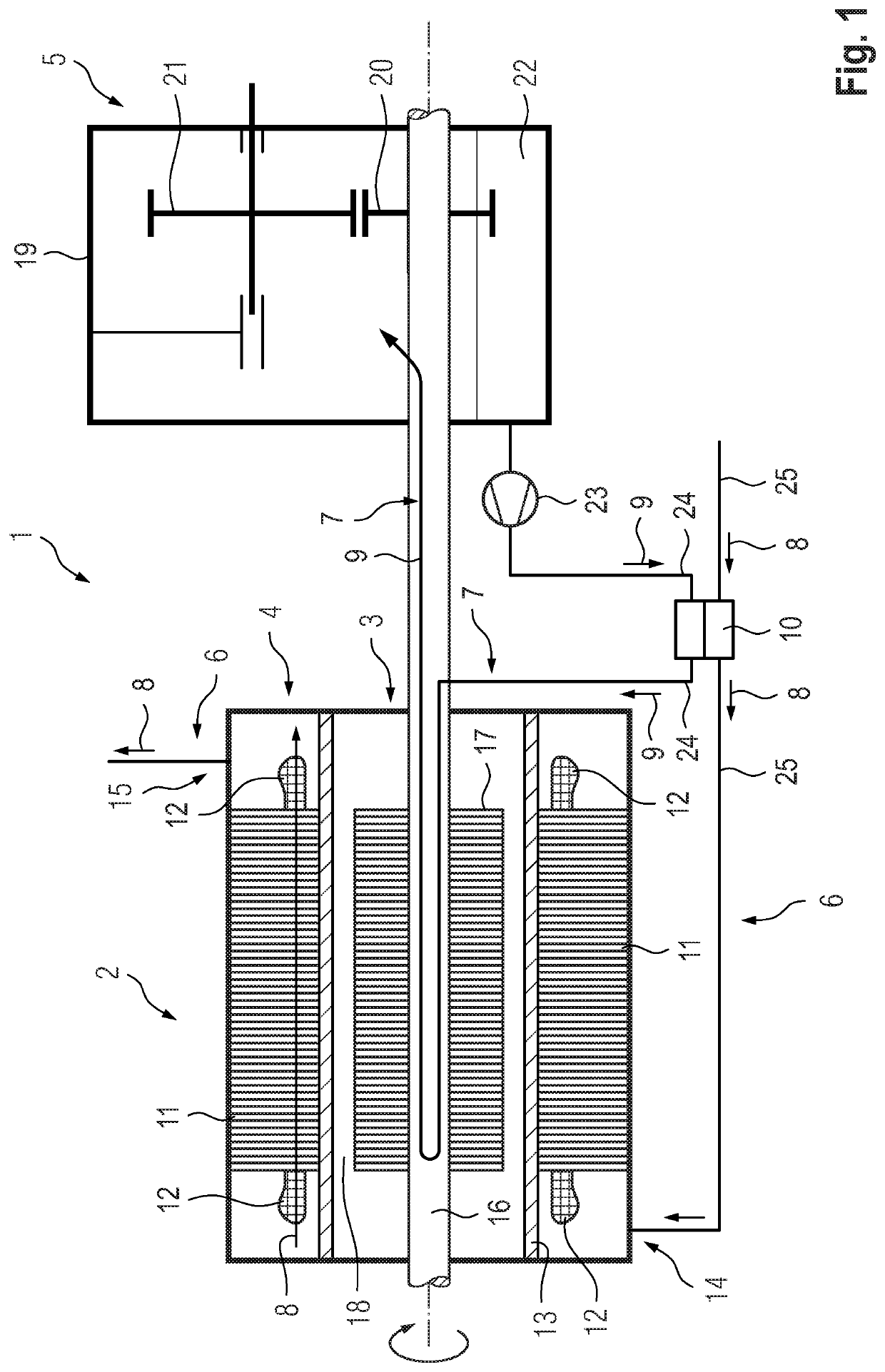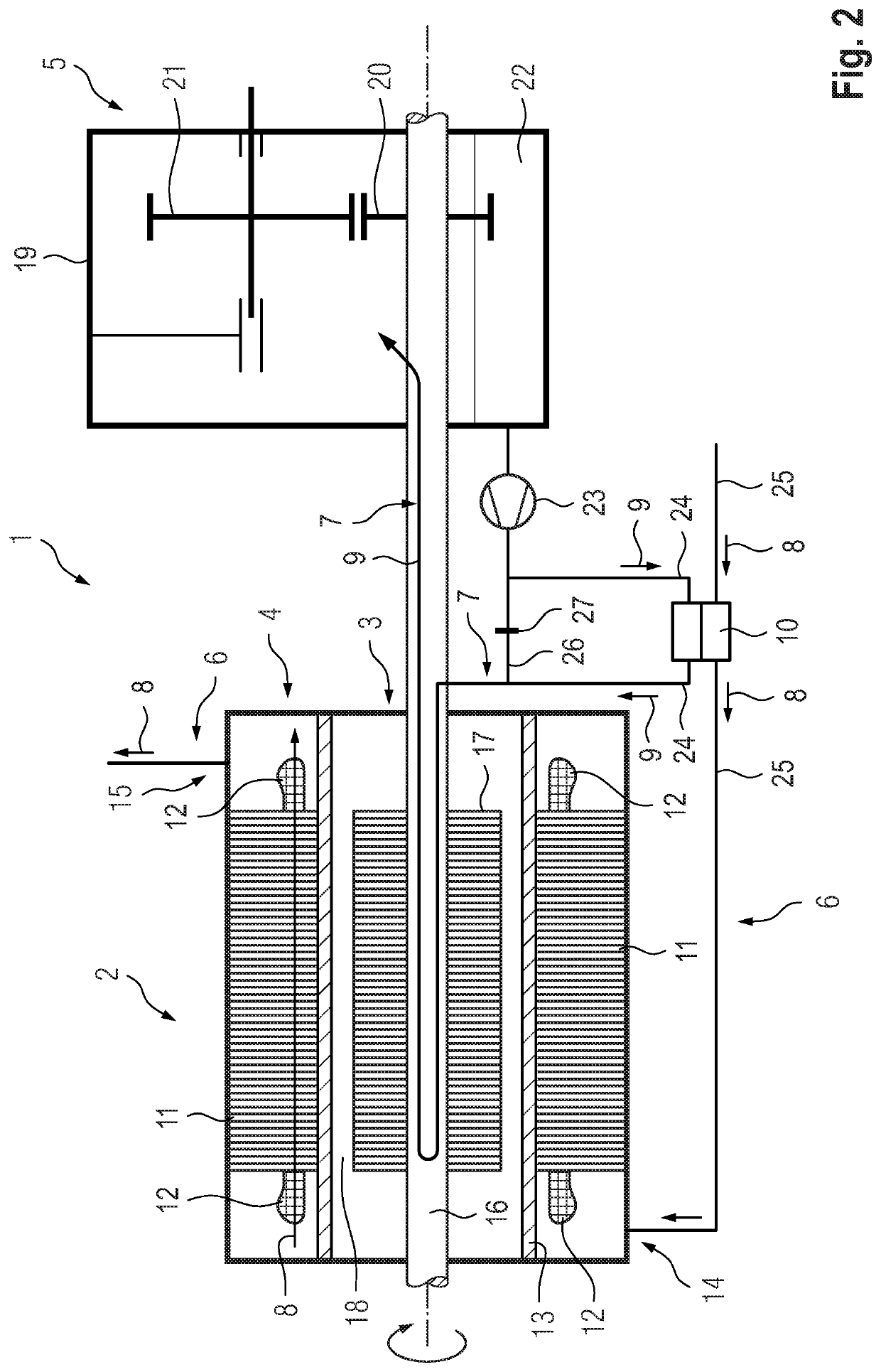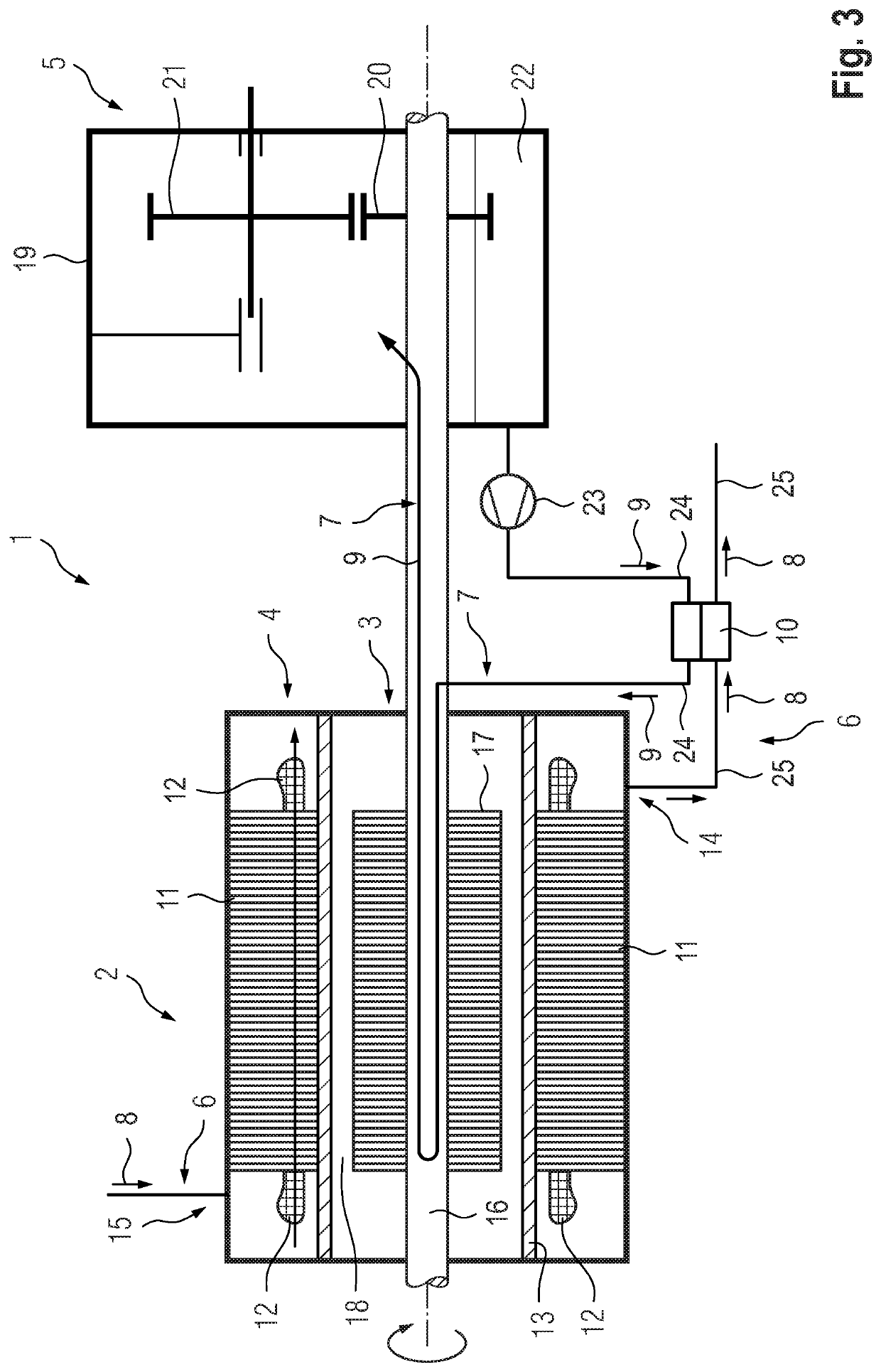Arrangement for cooling an electric machine in a motor vehicle, and method for operating the arrangement
- Summary
- Abstract
- Description
- Claims
- Application Information
AI Technical Summary
Benefits of technology
Problems solved by technology
Method used
Image
Examples
second embodiment
[0039]The embodiment of FIG. 1 constitutes the simplest variant, in which, in the vehicle, flow passes first through the heat exchanger 10 and then through the stator 4. FIG. 2 constitutes a variant in which, when the bypass is open, little warming of the first coolant 8 passing through the heat exchanger 10 occurs, and thus particularly good cooling of the stator 4 is ensured. The closure 27 of the bypass line 26 may be a bypass valve for controlling the flow rate of the second cooling medium / transmission oil flowing through the bypass line 26.
third embodiment
[0040]The third embodiment is illustrated in FIG. 3 and differs from the first exemplary embodiment of FIG. 1 merely in that the sequence of the throughflow in the first cooling circuit 6 has been changed. The first cooling medium 8 flows first through the stator 4 and then through the heat exchanger 10. This variant is used if fast heating of the transmission oil is desired.
fourth embodiment
[0041]The fourth embodiment is illustrated in FIG. 4, and shows the first cooling circuit 6 and a switchable valve 28 in the form of a 4 / 2 directional valve. In the first switching position of the valve 28 shown in FIG. 1, relatively cold first cooling medium 8 flows via the connection 14 into the stator 4 and passes from the stator 4 via the connection 15 and from there via the heat exchanger 10 back to the valve 28. The connections 14 and 15 are arranged on the same side of the stator.
[0042]By contrast, in the second position of the valve 28 illustrated in FIG. 5, relatively cold first cooling medium 8 passes from the valve 28 via the heat exchanger 10 to the connection 15 and from there into the stator 4, and from the stator 4 via the connection 14 back to the valve 28.
[0043]The valve 28 can be operated to change the throughflow sequence of the stator 4 and the heat exchanger 10 in accordance with demand. The switching position shown in FIG. 4 warms the transmission oil with the ...
PUM
 Login to View More
Login to View More Abstract
Description
Claims
Application Information
 Login to View More
Login to View More - R&D
- Intellectual Property
- Life Sciences
- Materials
- Tech Scout
- Unparalleled Data Quality
- Higher Quality Content
- 60% Fewer Hallucinations
Browse by: Latest US Patents, China's latest patents, Technical Efficacy Thesaurus, Application Domain, Technology Topic, Popular Technical Reports.
© 2025 PatSnap. All rights reserved.Legal|Privacy policy|Modern Slavery Act Transparency Statement|Sitemap|About US| Contact US: help@patsnap.com



